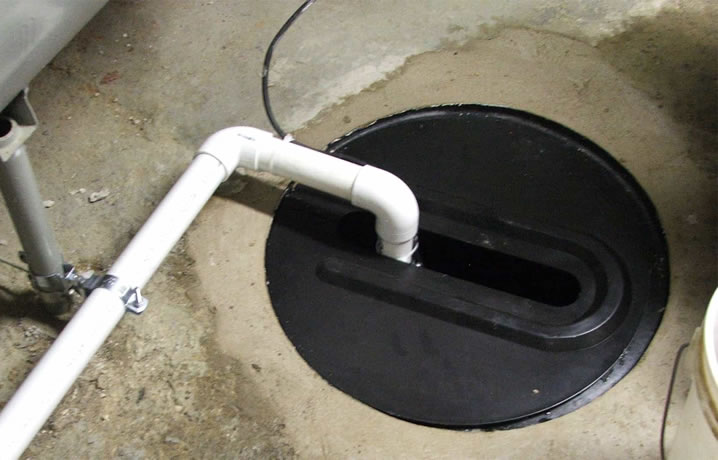An Guide to Effectively Maintaining a Sump Pump
An Guide to Effectively Maintaining a Sump Pump
Blog Article
On this page further down you will find a good deal of helpful facts involving How To Effectively Clean A Sump Pump.

Sump pumps are vital components in lots of homes, particularly in locations vulnerable to flooding or excessive dampness. They aid avoid water damages by efficiently eliminating excess water from cellars or crawl spaces. Nonetheless, like any other device, sump pumps require regular maintenance to ensure they operate properly when required the most. Cleansing your sump pump is a crucial part of its upkeep, and recognizing exactly how to do it appropriately can conserve you from pricey repair work and prospective catastrophes.
Introduction
Preserving a tidy sump pump is essential for its proper performance and durability. Disregarding this essential job can cause obstructions, malfunctions, and eventually, water damage to your residential property. For that reason, learning just how to clean up a sump pump is essential for house owners that depend on these tools to keep their basements dry and safeguarded.
Indications of a Dirty Sump Pump
Recognizing when your sump pump requires cleaning is crucial for avoiding possible breakdowns. Some usual indicators that indicate a dirty sump pump consist of unusual noises throughout procedure, decreased water circulation, and visible particles in the pit. If you discover any one of these symptoms, it's essential to cleanse your sump pump promptly to prevent any kind of further problems.
Preparing for Cleaning
Before you start cleaning your sump pump, it's essential to take some safety and security precautions. Beginning by turning off the power to the pump to avoid any kind of electrical accidents. Additionally, wear ideal protective equipment, such as gloves and safety glasses, to protect on your own from dust, debris, and potential microorganisms.
Understanding the Sump Pump
Prior to diving right into the cleaning process, it's essential to have a fundamental understanding of just how a sump pump functions. Normally installed in a pit or container below the cellar flooring, a sump pump contains numerous crucial elements, consisting of a pump, a float switch, and a discharge pipeline. When water accumulates in the pit, the float button turns on the pump, which then pumps the water out through the discharge pipe, far from the building's structure.
Step-by-step Guide to Cleaning Up a Sump Pump
Turning off the Power
Begin by disconnecting the power supply to the sump pump to prevent any type of accidents while cleaning.
Looking For Correct Performance
Prior to reinstalling the pump, do a quick examination to make sure that the float button turns on the pump properly. Put some water into the sump pit and observe the pump's operation. If everything is operating properly, you can rebuild the pump and reconnect the power supply.
Eliminating Particles and Dirt
Utilize a container or an inside story to remove any visible debris, dust, or sediment from the sump pit. Dispose of the debris correctly to stop it from clogging the pump or the discharge pipe.
Cleaning the Pump and Drift Change
When the pit is clear of debris, very carefully remove the pump from the pit. Evaluate the pump and the float button for any indications of damages or wear. Use a soft brush or towel to clean the surfaces and eliminate any built up crud.
Flushing the System
After cleaning the pump and float button, flush the sump pit with tidy water to remove any type of remaining dust or sediment. This will certainly assist guarantee that the pump operates smoothly and successfully.
Maintenance Tips to Maintain Your Sump Pump Clean
Along with regular cleansing, there are several maintenance tips you can follow to keep your sump pump in optimal condition:
Verdict
Cleansing your sump pump is an important aspect of its upkeep and guarantees that it operates efficiently when you require it the most. By complying with the actions detailed in this guide and incorporating regular maintenance right into your regimen, you can expand the life-span of your sump pump and shield your home from water damages.
6 STEPS ON HOW TO CLEAN A SUMP PUMP PROPERLY
UNDERSTANDING SUMP PUMPS
Your sump pump plays a crucial role in protecting your home by managing and removing excess water. It primarily functions as a “shield”, guarding your basement against the damaging effects of water accumulation. The pump is housed in a sump pit in the lowest part of your basement, and its job is to pump out any water that collects there.
During heavy rainfalls or when snow melts rapidly, water can infiltrate your basement, posing potential risks like flooding, structural damage, and harmful mold growth. Here, the sump pump springs into action, pumping out the intruding water and directing it away from your home.
SAFETY FIRST
Before cleaning, remember to prioritize safety. Disconnect the sump pump from the power source to prevent any accidental electric shocks. Also, wear sturdy gloves to protect your hands from any sharp or dirty components within the pump.
REMOVE THE SUMP PUMP
After ensuring your safety, the next step is to remove the sump pump from its pit. Doing this might require careful maneuvering as you don’t want to damage any pump components. Once removed, clean the sump pit to remove any accumulated debris or sludge.
INSPECT THE PUMP
Inspect the pump for any visible signs of wear or damage. Check the power cord, float switch, and impeller housing. If any components look worn out or damaged, consider replacing them to ensure optimal performance.
CLEAN THE PUMP
Thoroughly clean the pump with warm, soapy water. Make sure to rid it of any dirt, gravel, or other debris that might impede its performance. You can use a toothbrush to clean the small, hard-to-reach parts of the pump.
REINSTALL THE SUMP PUMP
Reinstall the pump into the sump pit Make sure it’s positioned correctly to remove the water effectively Once it’s back in place, reconnect it to the power source TEST THE PUMP
Finally, pour some water into the pit to ensure the pump works correctly. It should start automatically and begin pumping out the water; if it doesn’t, check the power source and the positioning of the pump.
Remember, while cleaning your sump pump is an essential part of home maintenance, hiring a professional plumber for a thorough inspection and cleaning at least once a year is also important. This will ensure that your pump is in optimal condition, ready to protect your home from potential water damage.
BEST PRACTICES FOR CLEANING SUMP PUMP DISCHARGE PIPES
Regular Inspection: Regularly inspect your discharge pipes, especially during heavy rainfall or snowmelt periods. Look for any signs of blockage or damage. Early detection of problems can prevent serious issues down the line. Periodic Cleaning: Over time, sediment and debris can accumulate in the discharge pipes, impeding the flow of water. Regular cleaning helps keep the pipes clear and functioning efficiently. You can use a high-pressure water jet to effectively clean the pipes. Insulation During Winter: In colder climates, discharge pipes can freeze, blocking the outflow of water. Protect your discharge pipes from freezing temperatures by insulating them with foam pipe insulation. This will ensure the sump pump can continue to discharge water even in freezing conditions. Proper Positioning: The discharge pipe should be positioned to direct water away from your home’s foundation. Improper positioning can lead to water seeping back into the basement. Ensure the pipe is long enough and angled correctly. Installation of a Check Valve: A check valve prevents water from flowing back into your sump pit after the pump has pushed it out. Installing a check valve helps maintain the efficiency of your sump pump and reduces the risk of flooding. Minimize Pipe Turns: Every curve or turn in the discharge pipe can decrease the efficiency of water flow. By minimizing turns and bends in your discharge pipe, you can increase the efficiency of your sump pump. https://www.fullspeedplumbing.com/how-to-clean-a-sump-pump-properly9999/

Do you appreciate more info about ? Give feedback below. We will be delighted to find out your responses about this posting. We are looking forward to see you back again before long. Make sure you take a moment to promote this post if you appreciated it. Many thanks for being here. Revisit us soon.
Click Here Report this page